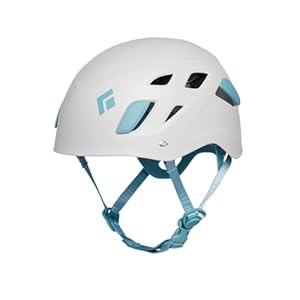Utah resident Kyle Burgess spends numerous his time open air, however you gained’t see any photos of him searching or fishing on his social media pages. An envoy for a number of out of doors health manufacturers, Burgess is a hardcore path runner. Which is why he was so confused on July 6, when he was stopped by a recreation warden whereas working on state land close to Salt Lake Metropolis. The officer knowledgeable Burgess that since he didn’t have a legitimate searching or fishing license, he was breaking the regulation by path working there.
“I simply obtained stopped by wildlife administration,” Burgess says in a video he shared to Instagram that day. He’d been working alongside the Bonneville Shoreline Path, which is a part of the Timpanagos Wildlife Management Area. “Guess I gotta purchase a fishing allow to run the paths. Oh boy.”
The new state law, which took impact Could 7, requires anybody over the age of 18 to have a legitimate searching or fishing license to entry the Wildlife Administration Areas in Utah’s 4 most populated counties: Davis, Salt Lake, Utah, and Weber. The 4 counties are positioned alongside the Wasatch Entrance, the place roughly 80 p.c of the state’s inhabitants lives.
The a whole bunch of feedback and replies on Burgess’ video vary from applause to disdain. (Burgess’ Instagram deal with, @cougargkyle, comes from a viral video he recorded in 2020, when he was confronted by a mountain lion whereas working on public land in Utah County.) The feedback additionally communicate to a bigger debate across the conservation of public areas and pure sources, and who foots the invoice for this stuff.
Some commenters have stated that every one out of doors customers — and never simply the hunters and anglers who purchase licenses — ought to help conservation with their very own {dollars}. Critics of the regulation say they refuse to purchase a license for one thing they don’t do (or, in some instances, even help). The state’s Division of Wildlife Resources, in the meantime, isn’t forcing anybody to purchase searching and fishing licenses. However the company says that if somebody isn’t keen to pay for wildlife administration areas, then they shouldn’t be capable to entry these locations, both.
“Lots of people are simply taking a look at this as them having to pay more cash to entry public property. When in all actuality, these are very totally different public lands,” Utah DWR spokesperson Religion Heaton Jolley tells Out of doors Life. “These lands are particularly for wildlife and searching and fishing, and they’re particularly bought with searching and fishing {dollars}.”
Why the New Utah Legislation Is Wanted
Utah Rep. Casey Snider, who sponsored the invoice that’s now regulation, echoes Jolley. He says the crux of the problem isn’t dropping entry to public lands, as many customers who don’t hunt and fish have claimed. It’s recognizing what sure lands are designated for.
“We’ve had a tough time differentiating WMAs and multiple-use public land,” Snider tells OL by telephone, whereas commuting on a practice from Baltimore to Washington D.C. “Individuals can get pleasure from [WMAs], however their highest use is for wildlife. This regulation is supposed to make clear that.”

Snider factors out that as Utah’s inhabitants has grown, so has the recognition of non-consumptive sports activities like mountain biking and path working. However these out of doors customers, he says, haven’t been contributing to the administration of WMAs the identical approach that licensed hunters and anglers have.
As only one instance of why the brand new regulation was mandatory, Snider factors to mountain bikers who’ve constructed unauthorized trails on WMAs in Utah County. (There may be additionally research displaying the impacts that law-abiding mountain bikers have on wildlife.) Snider says he’s seen related conflicts on WMAs in different areas, and that the regulation may very well be expanded to different counties sooner or later.
“The narrative of ‘we’re proscribing entry,’ is fake,” Snider says. “I disagree with that. Everybody ought to pay to assist these locations be the very best that they are often. Hunters and fishermen mustn’t bear the brunt of the price for sustaining these locations. This isn’t a restriction difficulty. It is a equity difficulty.”
Why Not Create a New License?
Utah is an outlier with its new regulation due to how the requirement is tied to searching and fishing licenses. Some Western states, like Montana, require non-consumptive WMA customers to purchase particular licenses, whereas most others don’t require WMA customers to have a selected allow until they’re searching and fishing. Utah selected to not create a brand new license for hikers, bikers, fowl watchers, and others for a selected purpose.
Learn Subsequent: Most Americans Want More Public Land, Not Less, Poll Shows
As a result of whereas federal funds aren’t hooked up to common recreation permits, searching license charges are matched with federal {dollars} although the Pittman-Robertson Act, and fishing license charges are matched in the identical approach by means of the Dingell-Johnson Act. Mixed, these two avenues present thousands and thousands in funding for fish and wildlife conservation. That giant pot of cash is then appropriated to particular person states primarily based on a couple of elements, together with the general variety of license holders.
In different phrases, promote extra licenses and obtain extra federal funding. The true beneficiaries, nonetheless, are the state’s wildlife sources.
“It’s not in regards to the cash, and it’s not in regards to the numbers to me,” says Snider. “It’s about equity, and the prioritization of wildlife on WMAs.”
Trending Merchandise

MEREZA Double Sleeping Bag for Adults Mens wi...

Emergency Glow Sticks with 12 Hours Duration,...

MOXILS Sleeping Pad, Ultralight Inflatable Sl...








